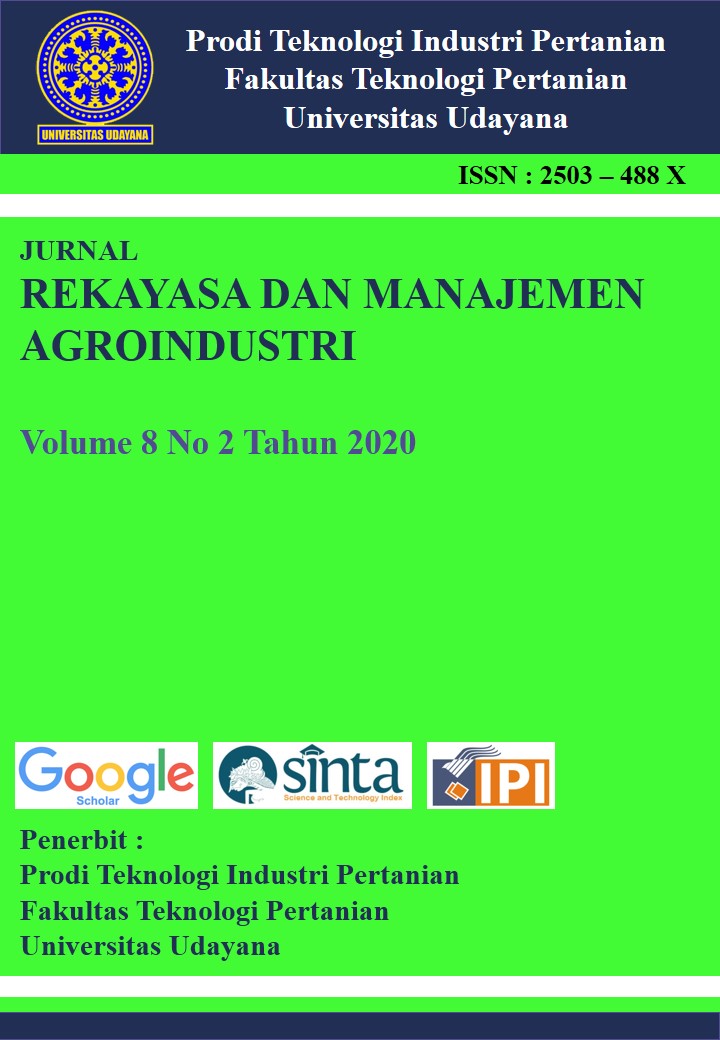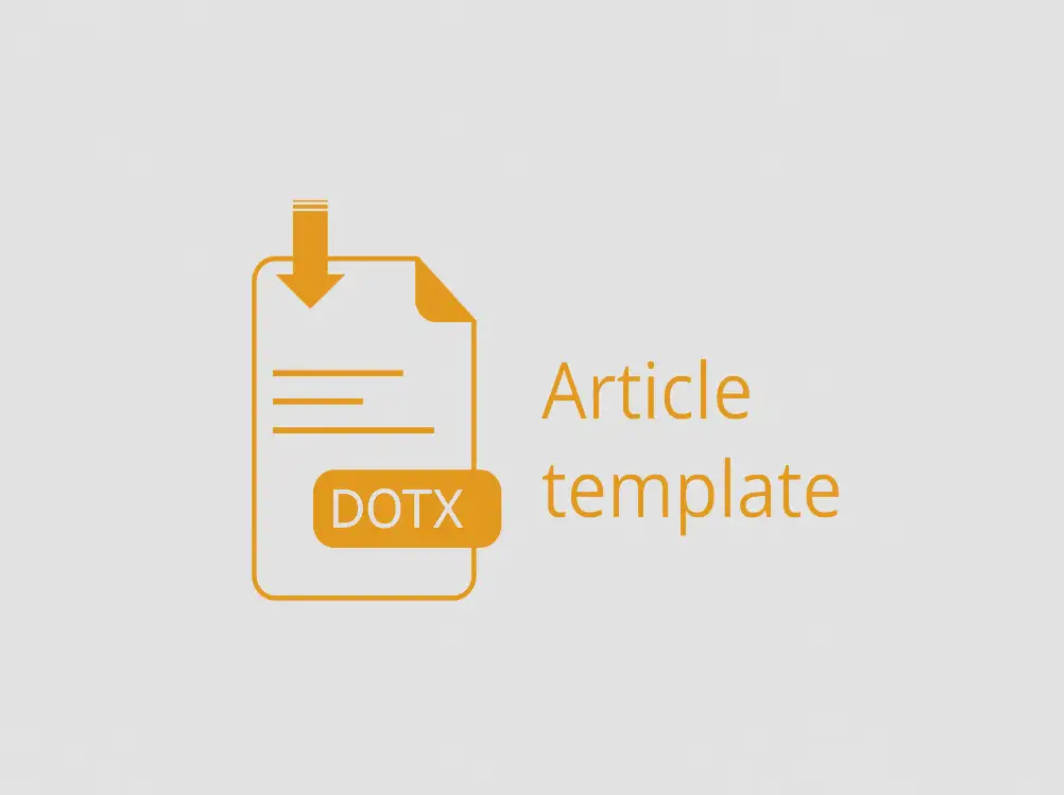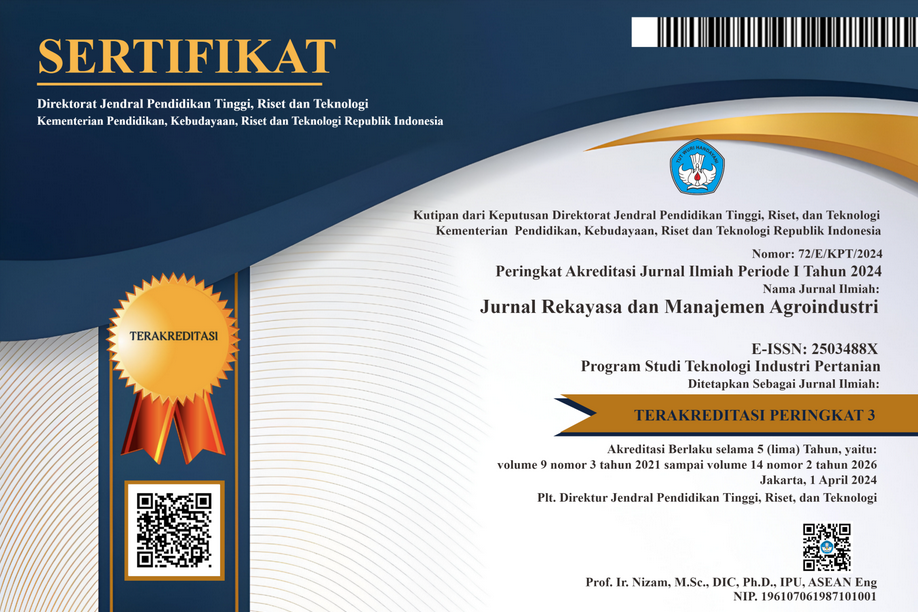Distribusi dan Perbaikan Pasca Panen Bunga Potong Sedap Malam (Polianthes tuberosa) dari Petani Desa Tunjuk, Tabanan ke Denpasar
Abstract
The aims of this study were 1) to find out the type and distribution path of tuberose cut flowers from farmers in Tunjuk Village to retailers in Denpasar, 2) to analyze the system and the impact of postharvest handling to tuberose cut flowers on each distribution path, 3) to find out the impact of postharvest improvements, by conducting an experiment which soaking the tuberose cut flower in holding solution. The snowball sampling method was used to find out the types and distribution paths of tuberose cut flowers, while to analyze the system and the impact of improvements on each distribution line the Commodity System Assessment Method (CSAM) was used through survey and interview directly to stakeholders. The holding solution used for soaking treatment is sucrose, silver nitrate and citric acid.The results showed that there were only two distribution path, namely line I (Farmer – Wholesaler – Retailer - Consumer) and line II (Farmer – Retailer - Consumer). Postharvest handling along distribution lines includes harvest, sorting, binding, wrapping, soaking, storage, packaging, distribution and display. The impact of handling on postharvest losses at the sorting stage at the farm level is 2% (insignificant), the level of wholesalers at 3% (insignificant), and at the retail level of 6% (significant). Soaking treatment in holding solution can prolong the freshness of flowers. Tuberose cut flowers can last 3.98 days when soaked using water and can last up to 6.85 days when soaked in sucrose, silver nitrate, and citric acid solutions.
Keywords: tuberose flower, sucrose, silver nitrate, citric acid, CSAM
Downloads

Ciptaan disebarluaskan di bawah Lisensi Creative Commons Atribusi-BerbagiSerupa 4.0 Internasional.
Seluruh artikel di Jurnal ini dapat disebarluaskan atas tetap mencantumkan sumber yang syah. Identitas judul artikel tidak boleh dihilangkan. Penerbit tidak bertangggung jawab terhadap naskah yang dipublikasikan. Isi artikel menjadi tanggung jawab Penulis.














